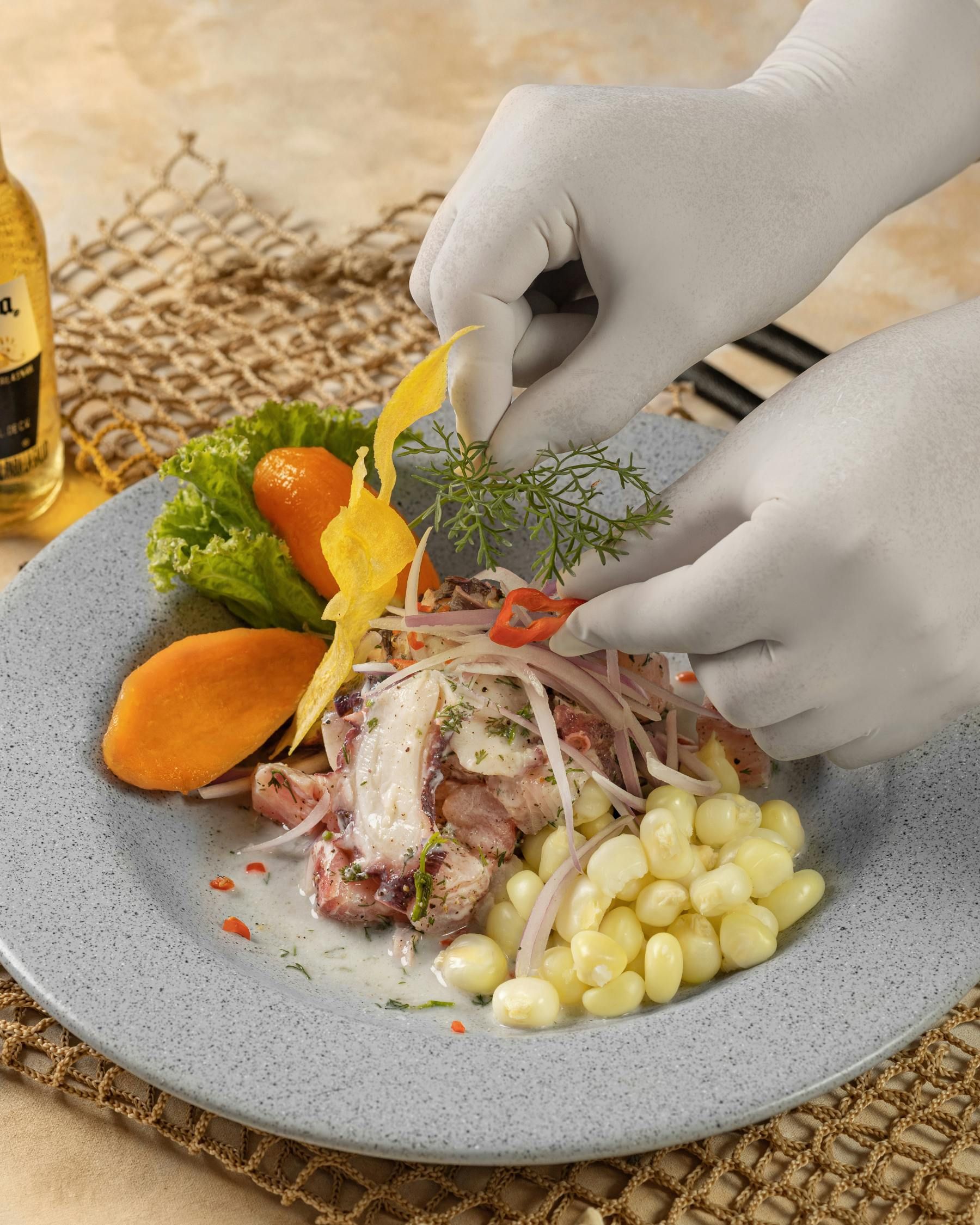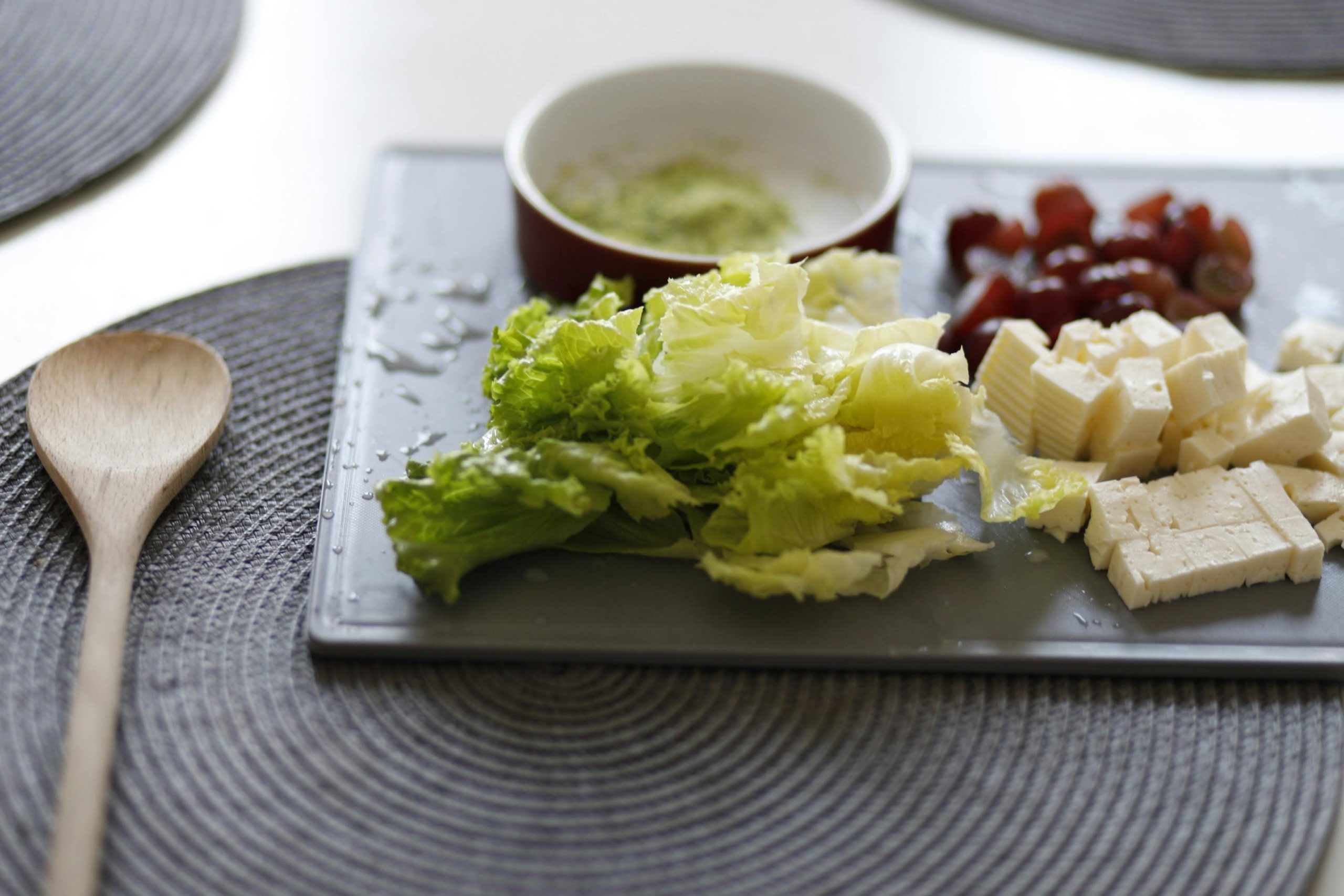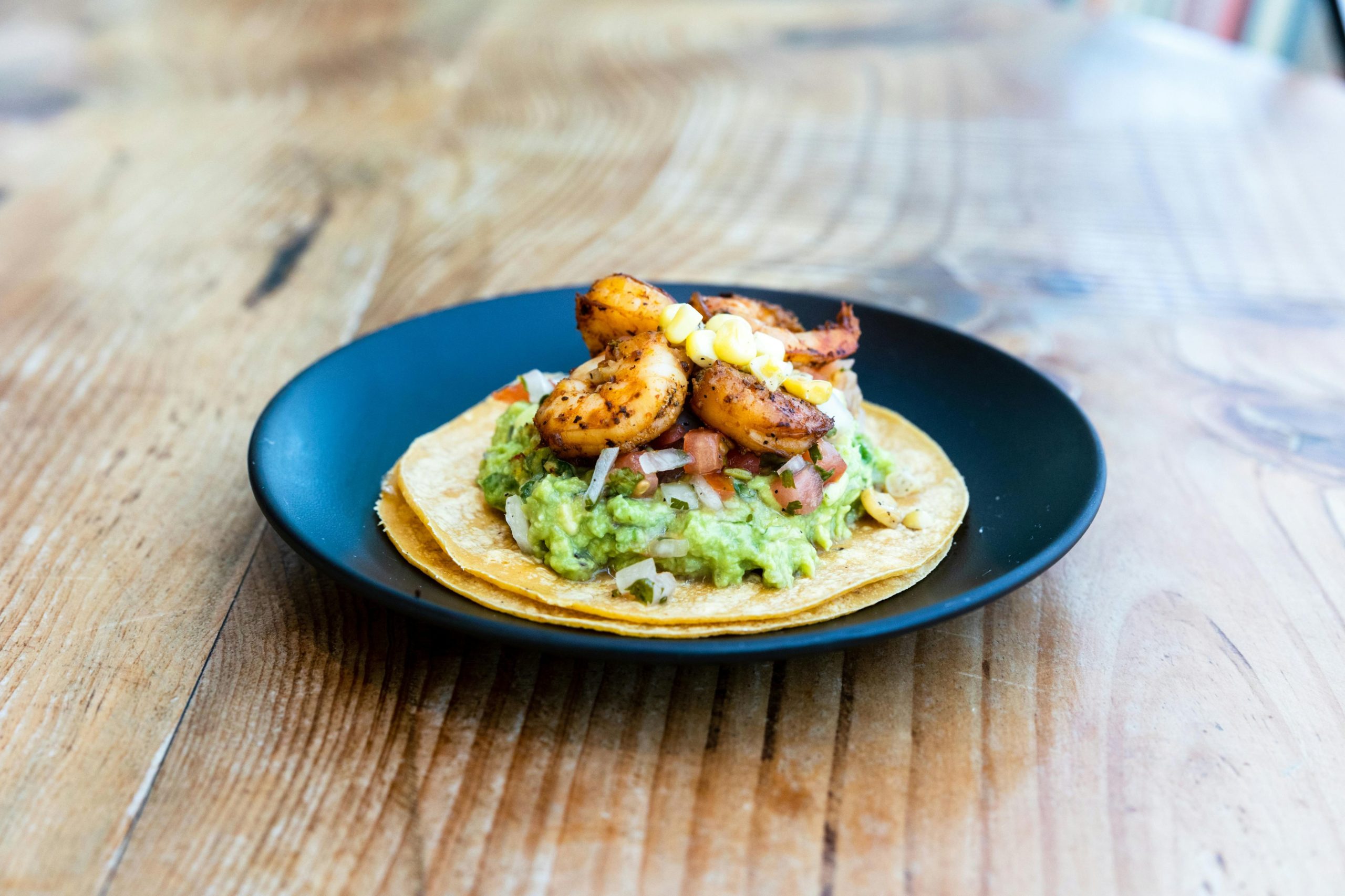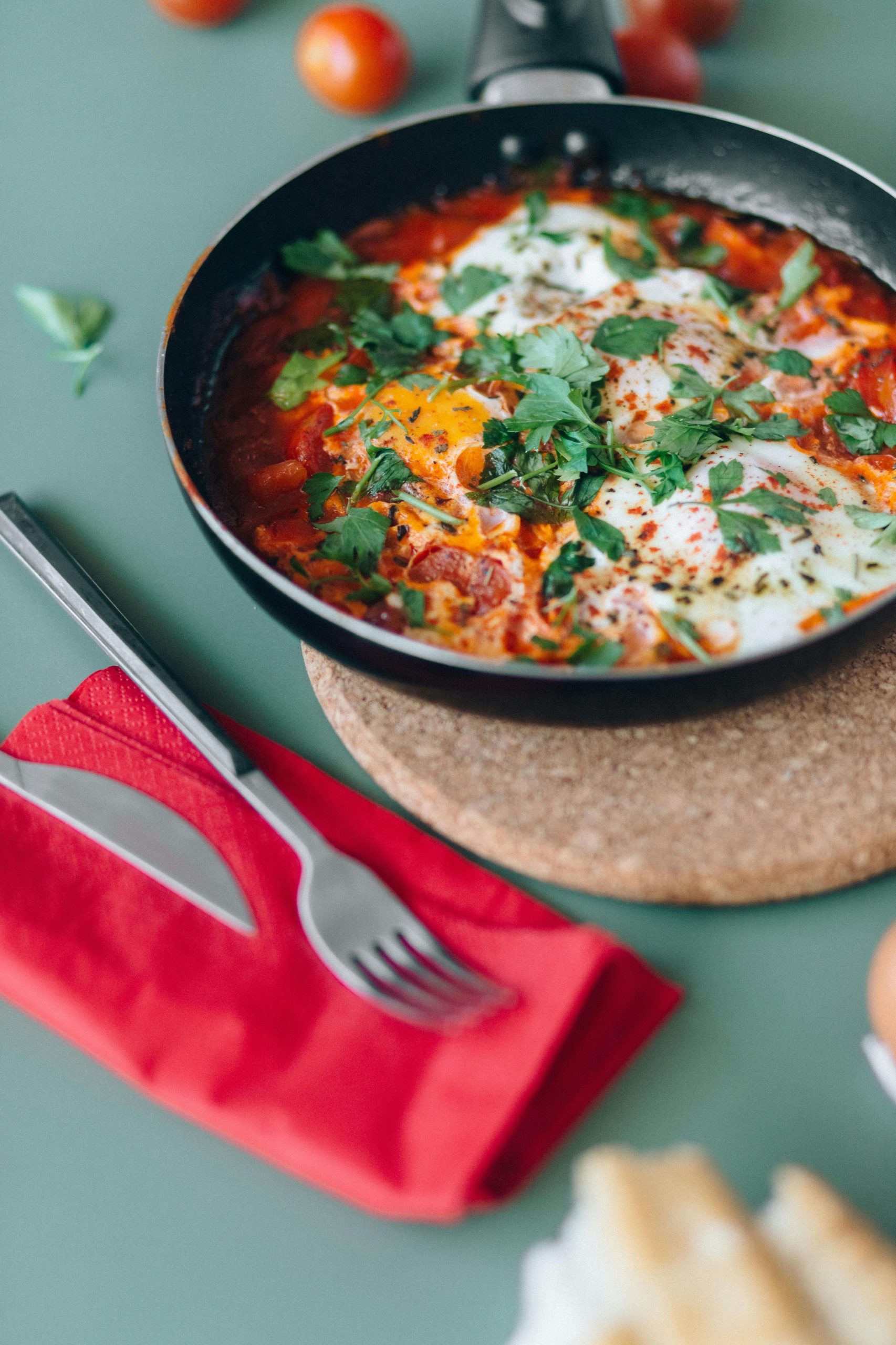Dive into the vibrant world of Ceviche Peruansk, a dish that captures the heart of Peruvian cuisine!
Finding a truly authentic ceviche can be challenging, especially if you’re unfamiliar with its rich cultural background and preparation nuances.
Ceviche Peruansk is a delightful seafood dish made with fresh fish marinated in lime juice, paired with onions, chili peppers, and often served with sides like sweet potatoes and corn.
This article will explore the historical significance, preparation techniques, and unique flavor profile of Ceviche Peruansk, offering insights and tips on how to enjoy this Peruvian culinary treasure at its best.
The Historical Journey of Ceviche Peruansk
The origins of ceviche, a quintessential Peruvian dish, trace back thousands of years, intertwining with the cultural tapestry of Peru. Initially prepared by ancient civilizations using simple ingredients like fresh fish, citrus juices, and spices, ceviche has evolved significantly over the centuries. This historical journey underscores not only culinary innovation but also the profound cultural significance embedded within this dish, marking it as a symbol of Peruvian identity and heritage.
Over time, the evolution of ceviche has been influenced by various cultural interactions, particularly during the Spanish colonization, which introduced new ingredients like onions and cilantro. These additions enriched the flavor profile of ceviche, transforming it into a more complex dish. Today, ceviche stands as a proud testament to Peru’s history of culinary excellence and cultural amalgamation, celebrated not just as a national dish but as a culinary artifact that narrates the story of an entire nation.
Ceviche: A Celebrated Cultural Heritage
In December 2023, UNESCO recognized Peruvian ceviche as part of the Representative List of the Intangible Cultural Heritage of Humanity. This prestigious designation highlights ceviche not only as a culinary delight but also as a cultural emblem, deeply rooted in Peru’s diverse societal fabric. The recognition by UNESCO celebrates the intricate practices, knowledge, and regional identities that ceviche represents, emphasizing its role in fostering social cohesion and cultural continuity in Peru.
Mastering the Art of Ceviche Peruansk Preparation
Mastering the art of Ceviche Peruansk preparation involves understanding the diverse regional twists that make each version unique. From the classic limeño style to the northern variants with black shells, each area in Peru brings its own flair to this beloved dish. By exploring these different methods, one can appreciate the rich tapestry of flavors and techniques that define authentic Peruvian ceviche.
The preparation of Ceviche Peruansk is not just about mixing ingredients; it’s a delicate art that balances freshness, acidity, and seasoning to perfection. Key techniques include the precise cutting of fish, the judicious use of lime juice for marination, and the artful addition of spices and herbs which vary from one region to another, enriching the culinary heritage of Latin America.
Key Ingredients of Authentic Ceviche Peruansk
The foundation of any authentic Ceviche Peruansk lies in its ingredients, each playing a pivotal role in crafting its distinctive taste. Fresh, raw fish, typically sea bass or red snapper, is essential, providing the soft, delicate texture that ceviche is known for. The freshness of the fish is paramount, as it is consumed raw and needs to be of the highest quality.
Other key ingredients include:
- Lime juice: This crucial component “cooks” the fish without heat and adds a vibrant tanginess.
- Red onions: Thinly sliced for a crisp, sharp bite.
- Aji amarillo: A Peruvian yellow chili that offers a colorful heat.
- Cilantro: Freshly chopped for a burst of herby freshness.
These elements come together to create a harmonious blend that is both refreshing and complex.
Leche de Tigre: The Secret Potion in Ceviche Peruansk
Leche de Tigre, directly translated as “Tiger’s Milk,” is the vibrant, spicy marinade that is fundamental to Ceviche Peruansk. This potent concoction is made from the lime juice used to cure the fish, mixed with slices of chili, chopped onions, salt, and pepper, and often blended with bits of fish to enhance its flavor.
Beyond its role in flavoring the ceviche, Leche de Tigre is celebrated for its invigorating properties, often touted as a cure for hangovers. Its bold, tangy flavor and supposed health benefits have made it a popular standalone drink in Peru, showcasing the deep cultural appreciation for every part of the ceviche preparation process.
Traditional Ceviche Peruansk Recipe
To create a traditional Ceviche Peruansk at home, start by sourcing the freshest sea bass or red snapper you can find. Cut the fish into even, bite-sized pieces and place them in a bowl. Squeeze enough lime juice to cover the fish, ensuring it’s well coated, and let it marinate for about 15-30 minutes, depending on your texture preference.
While the fish marinates, prepare your other ingredients:
- Slice red onions into thin julienne strips and soak them briefly in salted water to soften their bite.
- Chop cilantro and cut aji amarillo into thin strips.
- Once the fish is “cooked” by the lime juice, mix in the onions, chili, and cilantro. Serve immediately with sides of sweet potatoes and plantain chips to enjoy a classic Peruvian culinary experience.
The Unique Flavor Profile of Ceviche Peruansk
The unique flavor profile of Ceviche Peruansk is a vibrant symphony of tastes that dance on the palate. Freshness is key, with the primary ingredient being raw fish, typically sea bass or snapper, which provides a soft, delicate base. The fish is then “cooked” in lime juice, not with heat but through citric acid, which imparts a bright, tangy flavor that is both refreshing and bold. This citrusy punch is the hallmark of ceviche, distinguishing it from other seafood dishes.
To complement the zesty lime, other elements add depth and complexity to the dish:
- Red onions offer a sharp, crisp bite, having been thinly sliced and sometimes soaked to reduce their pungency.
- Aji amarillo, a Peruvian yellow chili, introduces a subtle heat and a splash of vibrant color.
- Cilantro is sprinkled on top for a burst of herby freshness, enhancing the overall freshness of the dish.
These ingredients, when combined, create a harmonious blend that is not only a delight to the taste buds but also a feast for the eyes, making Ceviche Peruansk a truly sensory experience.
Ceviche Around the World: Global Variations
Ceviche, while deeply rooted in Peruvian culture, has traversed oceans and borders, adapting to the tastes and ingredients of various countries. In Mexico, for example, ceviche includes a generous addition of tomatoes and is often heavier on the juice, creating a more soup-like consistency compared to its Peruvian counterpart. Moving further north, in the United States, particularly in coastal cities, ceviche has been embraced with local twists, often incorporating ingredients like avocado and mango, showcasing the dish’s versatility.
Across the Pacific, in Asian countries like Japan, ceviche has been subtly infused with local flavors, incorporating ingredients such as soy sauce and wasabi, which align with their traditional raw fish dishes like sashimi. This fusion highlights the universal appeal of ceviche, bridging diverse culinary traditions through a shared love for fresh seafood. Each regional variation not only broadens ceviche’s global palate but also enriches the cultural tapestry of international cuisine, making it a beloved dish worldwide.
Tips for Enjoying Ceviche Peruansk
To truly savor Ceviche Peruansk, timing and pairing are crucial. Enjoying ceviche right after it’s prepared ensures you experience the optimal texture and flavor of the fish, as the acidity from the lime hasn’t fully “cooked” the fish. Pairing your ceviche with a chilled white wine, such as Sauvignon Blanc or a crisp Chardonnay, can beautifully complement the dish’s vibrant citrus flavors.
For an enhanced dining experience, consider these pairing suggestions:
- Sweet potatoes or plantain chips add a delightful sweetness and crunch, balancing the ceviche’s acidity.
- Corn nuts or toasted corn provide a savory contrast, enhancing the overall flavor profile.
These pairings not only elevate the taste but also adhere to traditional serving methods, making your Ceviche Peruansk experience as authentic as possible.
Tiradito: The Cousin of Ceviche Peruansk

Tiradito, often considered the cousin of Ceviche Peruansk, is a Peruvian dish that showcases the art of thinly slicing raw fish, similar to sashimi. Unlike ceviche, which uses cubed fish, tiradito’s fish is elegantly cut into long, smooth strips. Both dishes are marinated in citrus, but tiradito is typically dressed with a spicy and aromatic sauce just before serving, maintaining the fish’s delicate texture and subtle flavors. This method highlights the influence of Japanese cuisine on Peruvian cooking, known as Nikkei cuisine, which emerged from the blend of local and Japanese immigrant culinary traditions.
While both tiradito and ceviche are pillars of Peruvian seafood cuisine, their key differences lie in preparation and presentation. Here are some distinct features:
- Fish preparation: Tiradito involves slicing fish, whereas ceviche uses chunks.
- Marination time: Ceviche marinates longer, allowing the citrus to ‘cook’ the fish, whereas tiradito is briefly marinated or dressed immediately before serving.
- Onion presence: Ceviche often includes onions, adding a crunchy texture and pungent flavor, while tiradito typically omits onions to keep the focus on the fish. These variations make tiradito a unique dish that complements the bold flavors of ceviche in Peru’s diverse culinary landscape.
Experience Authentic Ceviche with Indulge‘s Culinary Tours
INDULGE offers an exclusive opportunity to dive into the world of authentic Ceviche Peruansk through their expertly curated culinary tours in Zurich. These tours are not just about tasting food; they’re a full sensory journey into the rich culinary history and vibrant food scenes of Zurich. By choosing INDULGE, you’re signing up to explore the intricate flavors and preparation techniques of Ceviche Peruansk, guided by local culinary experts who are passionate about food and culture.
During these tours, participants will:
- Learn about the unique ingredients that make Ceviche Peruansk a standout dish.
- Discover the traditional methods of preparing Ceviche Peruansk, right from the experts.
- Enjoy a blend of Swiss culinary specialties with a taste of international cuisine. This makes every tour with INDULGE not just a meal, but a memorable gastronomic adventure, blending education with enjoyment in a way that only true food lovers can appreciate.
Frequently Asked Questions
What is ceviche in Peru made of?
Peruvian ceviche, specifically Ceviche Peruansk, is primarily made of fresh, raw fish such as sea bass or red snapper, which is marinated in lime juice. This dish also includes thinly sliced red onions, aji amarillo (a Peruvian yellow chili), and freshly chopped cilantro. These ingredients are essential in creating the distinctive taste and texture of authentic Peruvian ceviche.
Why is Peruvian ceviche so good?
Peruvian ceviche is celebrated for its unique flavor profile, which is a vibrant symphony of tastes. The freshness of the raw fish combined with the tangy lime juice, crisp red onions, spicy aji amarillo, and fresh cilantro creates a harmonious blend that is both refreshing and complex. The careful balance of acidity, freshness, and seasoning, perfected over centuries of culinary tradition, makes Peruvian ceviche particularly delightful.
What do Peruvians eat with ceviche?
In Peru, ceviche is typically served with sides like sweet potatoes and corn. These sides complement the zesty and spicy flavors of the ceviche, providing a sweet and crunchy contrast that enhances the overall dining experience. Additionally, plantain chips are often served alongside to add a delightful crunch.








